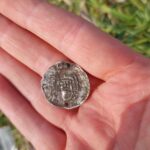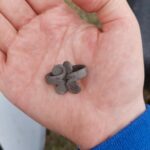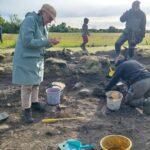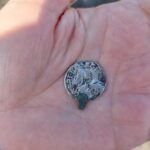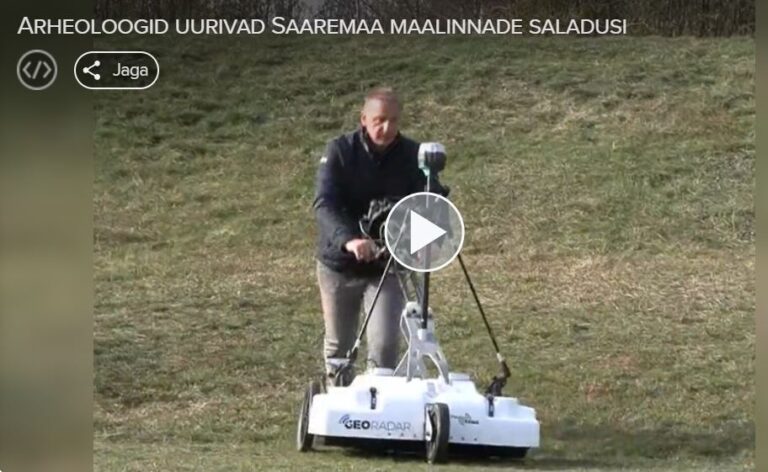As we very soon welcome the new year, we are delighted to announce that Foundation Osiliana will continue researching the early history of Saaremaa with the support of Kristjan Rahu!
Five years ago, a group of enthusiasts led by philanthropist and entrepreneur Kristjan Rahu and Marika Mägi, Doctor of Archaeology at Tallinn University, established Foundation Osiliana with the aim of conducting scientific research into the early history of Saaremaa. We are now pleased to announce that Kristjan Rahu has decided to support the foundation’s activities for the next five years with a total of €750,000.
Thanks to donations from Kristjan Rahu and several other history enthusiasts, numerous thorough archaeological excavations have been carried out on Saaremaa over the past five years using state-of-the-art technology, and several geophysical and laboratory studies have been conducted. The research has significantly expanded our knowledge of Estonia’s early history. The Valjala and Pöide hill forts have been thoroughly studied, and additional research has been conducted on the Kaarma and Muhu hill forts. Special attention has been paid to the burial sites of the first Christian islanders, which date back to the 13th century. Several analyses have been carried out on those buried there, including ancient DNA testing.
Several scientific articles have been published on the results of the research. In cooperation with the Saaremaa Museum, an exhibition on medieval islanders was curated, and in 2026, a book on medieval Estonia will be published in cooperation with the Estonian History Museum and the University of Tartu. Audio guides in Estonian and English have been created for Valjala hill fort, and a 3D model of Valjala is being developed, which will allow visitors to explore the different parts of the hill fort.
In addition, an Estonian- and English-language web platform www.osiliana.eu/en has been developed, which brings together databases of archaeological finds, research, and translations of documents from Saaremaa, and regularly publishes overviews of the foundation’s activities and research results. Members of the Osiliana team have presented the history of Saaremaa and Estonia at international conferences in Norway, Sweden, Denmark, Iceland, Spain, and the Czech Republic.
Many thanks to all our supporters and have a wonderful new year!
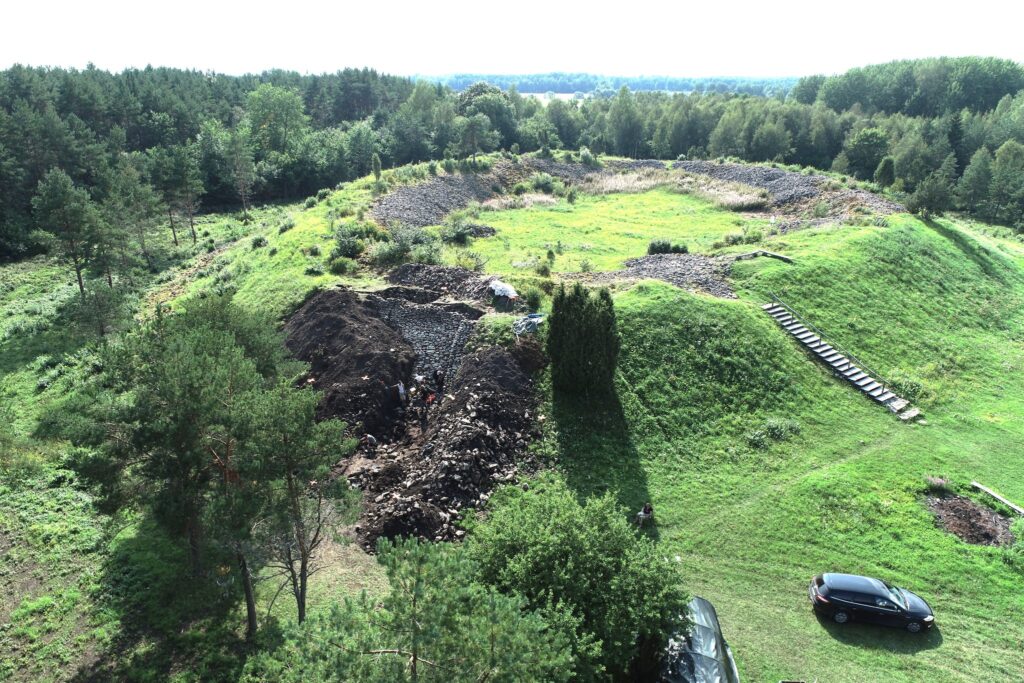
Congratulations to Kristjan Rahu on the Tullio Ilomets Heritage Conservation Award presented by the Estonian Heritage Society!
Over its five years of operation, the Foundation Osiliana has developed into a remarkable and exceptional phenomenon in both the Estonian and the international humanities landscape. Its initiator and principal supporter, Kristjan Rahu, has through his intellectual and material contributions created conditions comparable to the impact of the great philanthropists of history — we can only imagine how much less colours the world would have, for example, without the contributions of the Medici. Thanks to Kristjan Rahu’s consistent support, Osiliana has been able to research the history of Saaremaa, and Estonian history more broadly, at the highest international level.
Since its establishment in 2020, Osiliana has engaged systematically in the study of Saaremaa’s archaeological heritage, currently focusing primarily on the Late Iron Age and the Early Middle Ages. Research has concentrated on hillforts and burial sites associated with this period, and their interpretation has made extensive use of modern natural-science analyses. In just five years, numerous archaeological, historical, geoarchaeological, and laboratory studies have been carried out, and modern technology has been acquired that enables fieldwork and data collection at a significantly higher level than before. The research is led by the experienced archaeologist Marika Mägi, and the foundation has deliberately involved young historians and archaeologists in its activities, thereby contributing to the emergence of a new generation of researchers.
One of the foundations of Osiliana’s success has been the understanding that technical resources and funding for analyses alone are not sufficient. Equally important is investment in people aka the researchers themselves, whose work quality and continuity depend on stable and dignified income. For many years, research into the early history of Saaremaa and the Estonian islands more broadly relied largely on enthusiasm, as financial resources were extremely limited. Osiliana’s activities have significantly changed this situation, and the foundation has developed into a small but effective research center that has earned recognition both in Estonia and internationally. We have presented Saaremaa’s and Estonia’s history at conferences in Iceland, Sweden, Norway, Denmark, Spain, and elsewhere.
The results of this research have also been visible to the wider public. Saaremaa’s historical sites have become more accessible and better presented, both in the digital environment and on site, offering new knowledge to local residents and visitors to the island alike. Even more important, however, has been a scholarly shift in the interpretation of Estonia’s earlier history, especially concerning the 13th and 14th centuries, where the role of local communities is now seen as far more active than before. In the case of Saaremaa, this new interpretation has been largely supported by Osiliana’s research results, which would not have been possible without Kristjan Rahu’s financial and moral support.
In the current complex geopolitical situation, the significance of such research is particularly important. Studying, interpreting, and presenting one’s own history at the international level is not merely an academic pursuit, but an essential part of cultural self-awareness and continuity. Osiliana’s work is a clear example of how purposeful philanthropy and professional scholarship can together create a lasting and far-reaching impact.
We are glad to announce that our discovery and excavations near Muhu so-called town and the two coin hoards found from there have been nominated for the National Heritage Board’s annual awards in the category “Find of the Year”!
There are three nominees in this category, all of which are related to archaeology. The other two nominees are silver coins dating back to the 11th century found in Sarve, Hiiumaa, and the Sindi-Lodja Stone Age complex.

Osiliana also lends a hand to fellow archaeologists in tidying up excavation sites.
Today, we closed a large excavation pit at the Bronze and Early Viking Age hillfort of Asva. The pit had been open for years, its sides had started to collapse, and it had become a danger to visitors.
Thanks to the generous support Osiliana has received this year from kind people, we were able to make the site safe again. As a small token of our gratitude, we have made sure that everyone can visit Asva hillfort without the risk of falling into the pit!
Osiliana has now begun its summer excavations at Pöide hillfort, which will continue until August 25th.
We are continuing to excavate the central area of the hillfort, where last year we found numerous 13th–14th century artefacts and a mysterious 1.8-meter-deep hole. This year, we hope to gain more knowledge!
Looking ahead, we can already say that the Open Doors Day at the excavation site will take place on August 23rd at 12:00 PM. All those interested are welcome!
We are happy to announce that just before the summer solstice we were asked to participate in gold plating the golden hill of Tallinn University, as our micro-documentaries were named the winner of the ‘Best Creative Project’ category of the Tallinn University’s competition for the most outstanding publication, textbook and creative project!
PS! Gold plating is quite a task, one that truly requires mastery!
Many thanks to Videoõps, Tallinn University and Estonian Research Council!
We have launched our audio-guides in English (and Estonian) for Valjala hillfort!
Finally, we can reveal to you a project we have been working on for some time now and the first fruits of it are in front of you.
There are four audio guides in Valjala hillfort available freely to anyone to use: one telling the story of the town of Valjala, another of the hillfort itself, one about the courtyard of the hillfort in its heyday and what took place in there, and one about the ramparts of the hillfort.
The audio-guides can be listened to via QR codes attached to the posts in four different locations – in locations that offer the best view according to the theme.
In addition, we replaced the old information poster with a new one.
Here’s also a little sneak-peak in the form of an audio guide to the town of Valjala:
7-8 June 2025
Behind us is a truly great weekend on the island of Muhu!
In addition to the two silver treasures, we also found remains of structures in the deeper layer of the trench made at the site of the larger treasure. According to the surfing we did on the surrounding land, the cultural layer covered an area of about 4 hectares, which means that there was a significant settlement around the fortress of Muhu. It seems that we have found the same town (urbs) that, according to Henry of Livonia’s chronicle, was razed and burnt down by the crusaders after the hillfort of Muhu was conquered.
We are honoured and happy to announce that Risto Vahimets has decided to support the activities of Osiliana! With his kind donation we can bring more and more Saaremaa’s history closer to the public!
Many thanks to all the supporters who appreciate our history and the work that is being done to research and promote it!
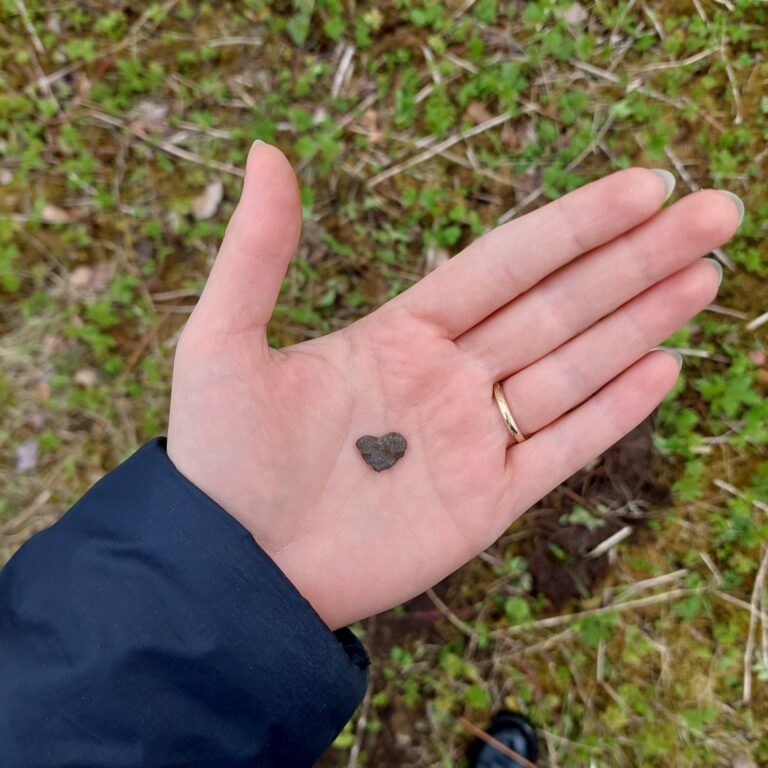
1-2 May 2025
Spring and winter are still fighting their last battle, but nevertheless our field season is already in full swing!
We have been out and investigating several places in Saaremaa, some with geologists Hannes Tõnisson, Alar Rosentau, Kärt Luige and Olav Harju.
As you can see from the pictures, doing academic research is anything but boring!
Our current approach to studying the past, combining expertise from different disciplines to get the broadest possible picture, has paid off nicely, and we’ll keep you updated with the new results as well.
In the meantime, for those who have not yet read, we suggest you pick up the article:
Mägi, M.; Tõnisson, H.; Harjo, O. (2023). Archaeological and ground penetrating radar investigations around three Saaremaa hill-forts – Valjala, Pöide and Kaarma. Archaeological fieldwork in Estonia, 2022, 73-90.
28-29 April 2025
24-27 April 2025
It was our pleasure to host in Saaremaa members of the Destination Viking / Follow the Vikings association. We had the great pleasure to introduce them to our own work and to show them places related to Viking history in Saaremaa.
Visitors came from as far as Israel and Iceland and despite the distance, we are all united by our love and passion for history and especially for the Viking heritage!
Many thanks to the co-organisers Visit Saaremaa, Asva Viking Village and Saaremaa Municipality!
The conference was supported by the Nordic Council of Ministers in Estonia.
We are pleased to announce that, in addition to Kristjan Rahu, other entrepreneurs from Saaremaa who care deeply about the preservation of our history and cultural heritage have decided to support Osiliana’s activities and mission. Thanks to their contribution, we will be able to explore and share Saaremaa’s rich past with all of you.
The archaeological fieldwork season is about to start again, bringing with it opportunities to improve our knowledge of our ancestors’ way of life. We are delighted that, thanks to new supporters, we have received an extra boost of €25 000 to continue our research.
We would like to sincerely thank all our supporters who share our passion for Saaremaa’s history and contribute to preserving our heritage for future generations!
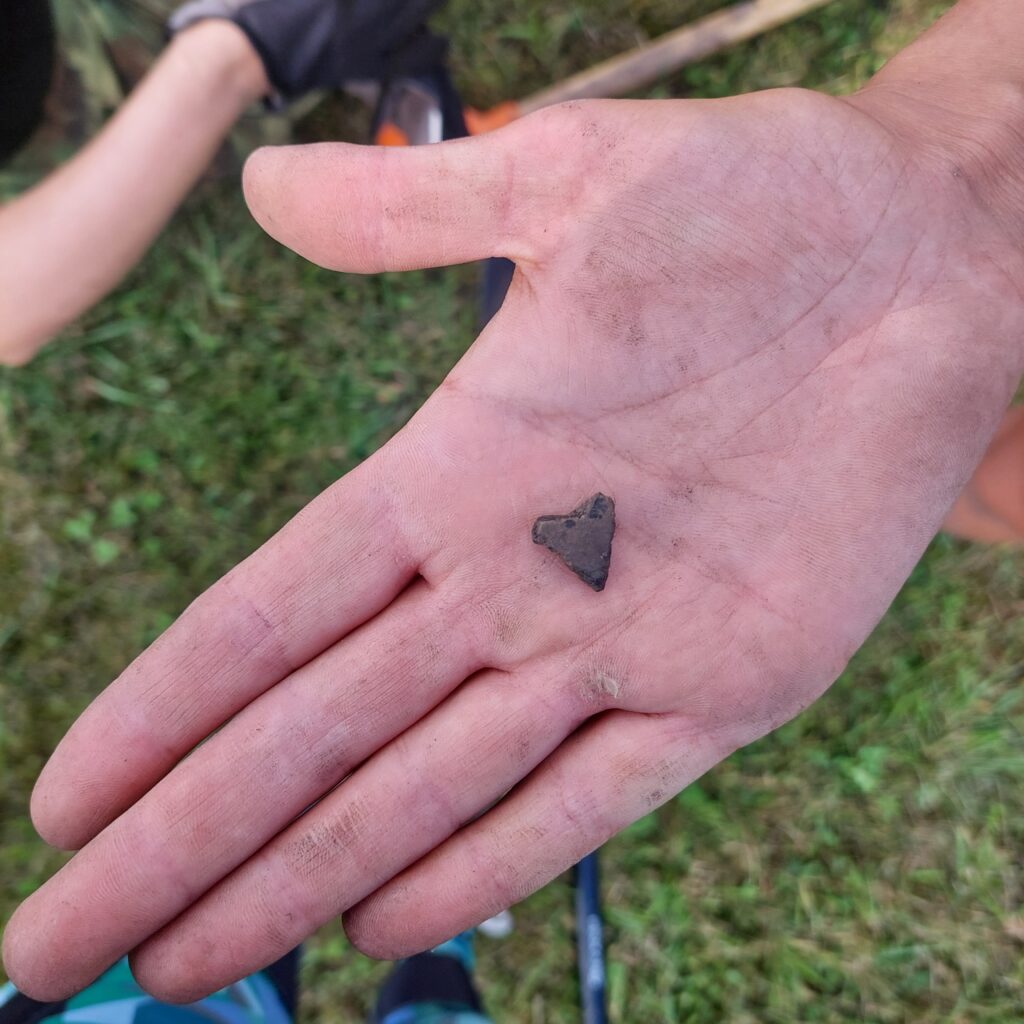
31 December 2024
and finally, we started excavations in the Pöide hillfort, where we will continue next year!
In addition to what we have listed here, we have a number of other exciting projects in the pipeline, which we will be able to announce to you in the future – for now, we can only say that there is much to look forward to!
Many thanks to all our collaborators-partners, excavation participants and helpers!
Wishing you a safe and happy New Year!

25 August 2024
17 August 2024
By the end of the second week of excavation, it may be concluded that the somewhat mysterious school at Pöide mentioned in written sources, which may have been in operation before the Teutonic Order came to power (thus from the late 13th century?) and where young brothers of the Order (also?) studied, may have been one of the buildings of the Pöide hillfort – we have so far found three artefacts interpreted elsewhere as stylus, plus some that may have been in similar use.
A stylus is a stick used to write on a wax tablet, from which the writing can be erased. These could be used for making temporary notes, but also, for example,for learning to write. Who knows?
Later the school would have fallen into ruins and the teachers would have left; the ruins would still have been visible at the time of writing (around 1400 or 15th century?).
There were indeed some massive buildings in the centre of the courtyard, some of which have a foundation of large stones and gravel several centimetres thick. It’s not quite clear where the school mentioned in the written source was exactly, but one possibility is certainly the hillfort of Pöide.
11 August 2024
The first week of excavations in Pöide hillfort has yielded finds of mainly 13th-14th century buildings, one of which has a well-preserved base of an oven.
There is no doubt that the hillfort was in use until around the time of the St. George’s Night uprising (1343-1345) – as was already suggested during excavations in the 1990s. A small knife with a fine bronze handle indicates that it was used by members of a higher social stratum who were active here.
In fact, one might think that the place called Pöide, mentioned in written sources around 1300, which was conquered at the time by the brothers of the Teutonic Order and taken back by the islanders during the uprising of 1343, was most probably the same Pöide hillfort, not the fortress near the church Pöide, where no such early buildings have actually been found.
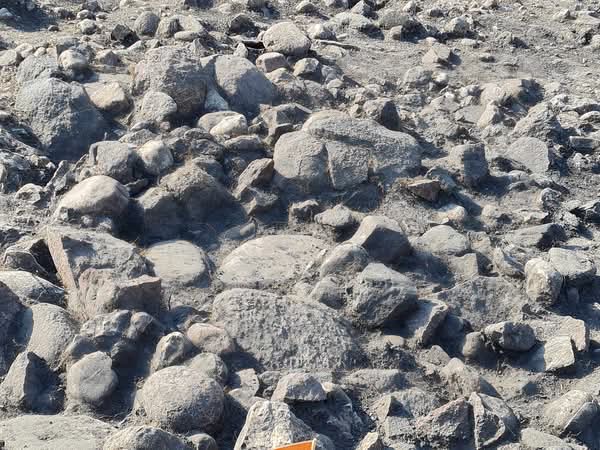
Read the news article about the excavations of Pöide hillfort through the link below (EST).
7 August 2024
What do you think it could be?
Heart? An arrowhead? A summer stone ?
The correct answer is: a potsherd.



We are very glad to have been part of the filming the third season of the documentary series “Treasures of the World” led by historian Bettany Hughes. Come and discover in the second episode the treasures found from Saaremaa together with us!
“Exploring places rich with amazing civilisations, unfolding excavations and startling new discoveries, the third season of Bettany Hughes’ Treasures of the World returns to Channel 4 on the 6th April at 7pm.
Bettany Hughes’ Treasures of the World tells the stories of extraordinary people who’ve changed the destiny of humankind and archaeological wonders that shape the story of the world. Bettany travels to places where a mosaic of cultures generates a dynamic history and where the past lives on in the present.
In this third season of Treasures of the World, Bettany visits the Estonian enclave where women rule, experiences extraordinary ancient traditions still practiced by the Muslim Pomaks in Bulgaria and discovers the Amazon warrior graves in Azerbaijan which are redrawing the boundaries between myth and history. Across Albania, Georgia and the Eastern Mediterranean she discovers remote communities, fresh archaeological digs and surprising untold stories.
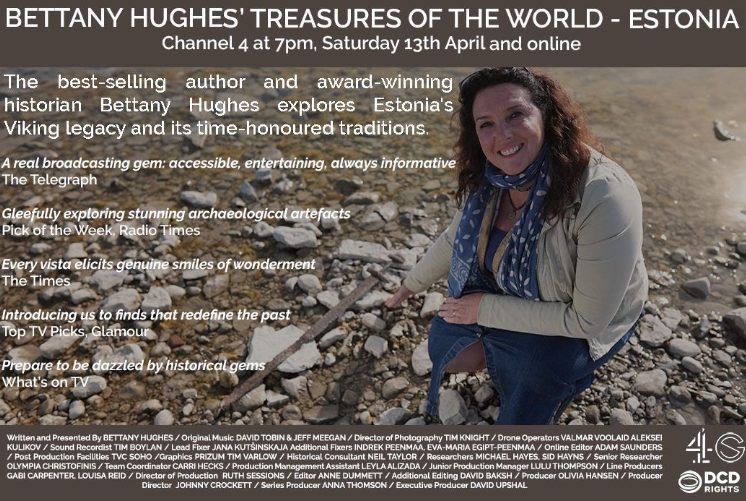
Source: here.

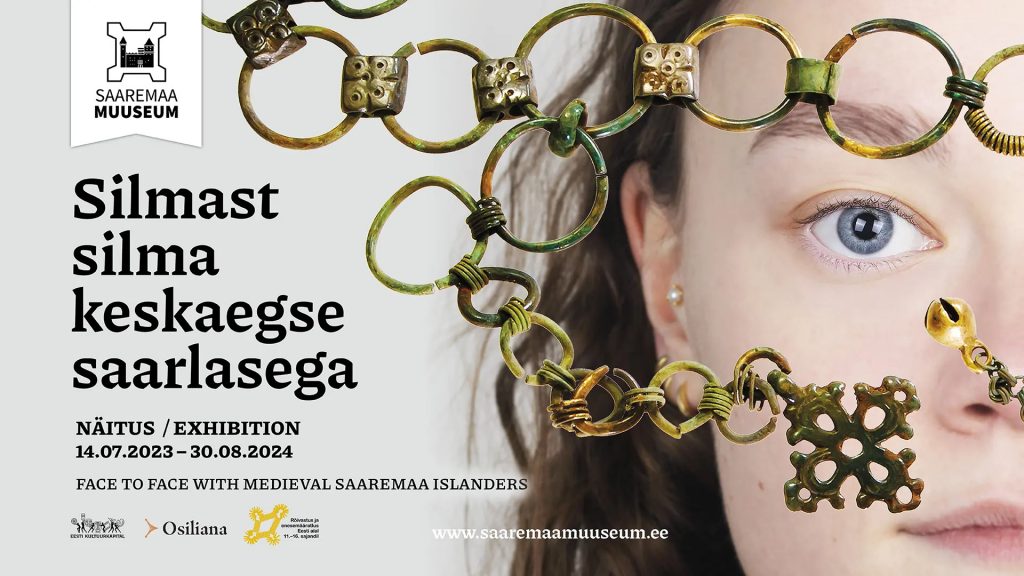
Exhibition: ‘Face to face with medieval Saaremaa islanders’ at Saaremaa Museum is opened from 14.07.2023 until 30.08.2024!
The 13th-century is considered a revolutionary period in the history of Estonia, as then these areas were joined to the Catholic European, and the dominance of mainly German immigrants in the society began.
The 13th- and 14th-century following the Crusades are a time of which we have only a handful of written sources. Approaches based on archaeological sources and gaining influence only in the last decade emphasize the active participation of locals in shaping medieval Livonia. Their role seems to be especially paramount in Saaremaa. Here, even after the Crusades, the power remained for the most part with the same families that ruled before the islanders were officially converted to Christianity and subjected to new lords in 1227.
This exhibition places the viewer literally face-to-face with a persons from the past.
Burials from the 13th century, already belonging to the Christian era, have been excavated in Saaremaa since the 1950s. They have been studied by several archaeologists, but the development of technology and financial possibilities have set their own limits when drawing conclusions.
This exhibition was completed thanks to private entrepreneurs who shouldered the resource-intensive work of archaeologists. Kristjan Rahu’s funding to Foundation Osiliana made it possible to commission scientific analyses, carry out research and create realistic reconstructions of people who once lived, two of whom can be met at the exhibition.
With the help of a research grant from the Postimees Foundation and Cultural Endowment of Estonia the clothing and jewelry of these people were recreated.
Displayed fragments of the life of the islanders from the 13th and 14th century emphasize simultaneously both International communication and strong local characteristics. The exhibition is a collaborative project of Saaremaa Museum Foundation, Foundation Osiliana, and the Postimees Foundation. In addition to the five curators, who are archaeologists and historians, a number of collaborators contributed to the realization of the exhibition. Reconstructions of medievaal residents of Saaremaa were made by specialists from Sweden and Germany, and replicas of objects, jewelry, and clothing were made by local craftsmen.
The employees of the Saaremaa Museum and the artists who assisted them did an enormous job in assembling and designing the exhibition. Thank you all!
The entire exhibition is bound together by a belt chain running through different themes, a piece of jewelry unique to a medieval Saaremaa woman. Through its large rings, you can see finds that were preserved in the ground, obtain answers to questions, and read about things you might never have known to ask about. One can see medieval inhabitants of Saaremaa, but also yourself, past and present. Perhaps we are not so different after all!
Curators: Marika Mägi PhD (SA Osiliana / Tallinn University), Riina Rammo PhD (University of Tartu); Piia Sandrak (SA Osiliana / Tallinn University); Jaana Ratas; Karin Rannaäär (SA Osiliana / University of Tartu)
Exhibition design: Karmo Menda; Graphic design: Mare Kõrtsini; Light designer: Airi Eras
Reconstructions of skeletons: Oscar Nilsson (Arts & Sciences, Stockholm), Özgür Bulut PhD (Invent Human Academy Tübingen)
Koljude 3D modelleerimine: Ragnar Saage (University of Tartu)
Reconstructions of objects: Edvards Puciriuss (University of Tartu Viljandi Culture Academy), Astri Kaljus (University of Tartu Viljandi Culture Academy), Indrek Jets PhD, Guna Zommere
DNA analyses: Kristiina Tambets PhD, (University of Tartu Institute of Genomics), Lehti Saag PhD, (University of Tartu Institute of Genomics), Stefania Sasso (University of Tartu Institute of Genomics)
Biological anthropology: Raili Allmäe PhD (SA Osiliana / Tallinn University), Martin Malve (University of Tartu), Maris Niinesalu-Moon (SA Osiliana / University of Tartu), Rimantas Jankauskas (University of Vilnius)
Isotopes: Maris Niinesalu-Moon (SA Osiliana / University of Tartu)
Conservation: Tarvi Toome (Tallinn University), Karin Rannaäär (SA Osiliana / University of Tartu)
Public-and educational programmes: Jürje Koert (SA Saaremaa Museum)
Marketing: Rita Rahu (SA Saaremaa Museum)
Redaction: Olavi Pesti (SA Saaremaa Museum)
Translator: Peeter Alan Tammisto (University of Tartu)
Exposition construction technicians: Tõnis Kallas, Perti Kask, Toomas Harjus, Roland Adamson (SA Saaremaa Museum), Heino Jürgenstein (Kurelto OÜ)
Museum shop exhibition range: Liisi Ots (SA Saaremaa Museum)
Photographer: Aivo Põlluäär (SA Saaremaa Museum)
Project manager: Maret Kukkur (SA Saaremaa Museum)
Director of SA Saaremaa Museum: Rita Valge
Project partners and supporters: Foundation Osiliana, Saaremaa Museum Foundation, University of Tallinn, University of Tartu, Postimees Foundation (POST4), Cultural Endowment of Estonias
17 June 2023
Yesterday and the day before, geologists from the University of Tartu, led by Alar Rosentau, contributed to the exploration of Osiliana.
They tested the preliminary findings of last year’s georadar survey and drilled several holes to Saaremaa’s forts and elsewhere. The main questions were what waterways existed in the vicinity of the fortresses or, for example, the Salme shipwrecks, or where the material for the construction of the large hillforts was taken from in the first place.
Not all the questions have been answered yet, but a good start has been made and two exciting days are behind us!
13 May 2023
Well-known historical documentary filmmaker Bettany Hughes was in Saaremaa with her crew to discover more about the past of Estonian biggest island and its surroundings.
Osiliana gladly contributed to the overview of Saaremaa’s archaeological sites. Step by step, the understanding of the rich archaeology and past of Saaremaa is growing worldwide.
Two days of intense filming are behind us, and in the autumn we will be able to see it all on screen.
Some time ago, ETAG launched a call for proposals to promote science. A total of 97 projects were submitted and 29 were selected. One of the lucky ones was Osiliana!
The grant is intended for the production of audiovisual material presenting early history of Saaremaa. The project will produce seven short videos, or micro-documentaries, presenting the end of Saaremaa’s prehistory and the beginning of the Middle Ages, as well as certain historical sites. One of these will give an overview of Saaremaa in the Viking Age, one at the beginning of the Middle Ages, while the others will present specific sites.
Sites have been selected from among those that have been the subject of significant archaeological discoveries in recent decades: the Tuulingumäe cemetery complex in Tõnija, the Lepna cemetery, the Viidumäe sacrificial site, the Valjala hillfort and the Karja cemetery.
29 April 2023
This year’s fieldwork season opened on 29 April! The end of April and the beginning of May are the best times for landscape inspections, as the trees are not yet in leaf and everything is easier to see.
As always, we drive around Saaremaa and visit the places of interest, whether we have to go through thick embankment or push through thick mud underfoot. It was nice to see that the hillfort of Valjala has been cleared from the scrub, both above and around the ramparts.
Some pictures from the first days can be found in the gallery below.
The first aDNA results of Saaremaa’s 13th-14th century burials are here!
The first samples were mainly taken from the cemetery at the former Karja manor, but also some from burials in the Loona manor cemetery and the Valjala churchyard.
Although it would ideally be a good idea to analyse all the deceased for a comprehensive analysis, some preliminary results can already be pointed out. The first and most important result seems to be that next of kin could be found in only one of the analysed burials. Thus, these were not strictly the burials of a single nuclear family. Only in the Karja cemetery was a man aged 25-35 buried with a daughter who had died under the age of 2.
Among the burials in Karja, two women of foreign origin have so far been found, one from present-day Finland or its eastern neighbouring area, the other from Scandinavia (or Western Europe in general). Both of them were buried either together or within a very short period between 1222 and 1266. The possible Scandinavian woman did not carry any surviving jewellery like most of the other women buried next to the Karja manor, but her clothing had a small amount of bronze ornamentation. Perhaps this was a woman from Sweden or Denmark who adapted to the local culture, but was buried without contributions, which was customary for Scandinavian Christians at the time?
In fact, in the same cemetery, there was another slightly foreign woman, wearing either Semgal or Vedic jewellery, and who was also genetically a little different from the usual coastal Estonian. She was buried close to a local man. Perhaps he was the woman’s husband? We will never know for sure, although according to the radiocarbon dating, the woman and the man were buried in broadly the same decade in the mid-13th century. The woman had died between the ages of 35 and 45. A distant maternal relative of the man was also buried 4 m away.
In the same Karja cemetery, three adjacent graves from the first half of the 13th century were found in which adult males were buried, but they were also not close relatives.
A 3D reconstruction of one of them – a man who died between the ages of 20 and 30 in Karja XV – will be completed in the spring.
As expected, most of the islanders were fair-skinned and light-eyed, with only one woman having brown eyes.
Kristiina Tambets, Professor of Archaeogenomics at the Institute of Genomics of the University of Tartu, will talk about the initial results of the genetic samples taken on Osiliana’s order and much more about genetics on the 13th December at 18:30 in the courtyard of Kuressaare Castle, in the Vahtkonna House.
22 November 2022
Two skulls found in Saaremaa have now been scanned on behalf of Osiliana and reconstructions based on these will be completed by the beginning of the next summer.
The first one is a skull of a 40-50 year old woman found in 2010 near Valjala church: https://skfb.ly/oAnOP.
The plan is to make a life-size silicone effigy of the woman, whom Riina Rammo and Jaana Ratas have promised to provide with a reconstruction of the ceremonial dress and jewellery of the late 12th century. You can read more about the same funeral from our previous posts.
The second skull comes from the cemetery of Karja Manor and it belonged to a man aged between 25 and 30, buried in the middle or second half of the 13th century: https://skfb.ly/oAvLG.
Both reconstructions will be on display at an exhibition on medieval inhabitants of Saaremaa aka Osilians opening at Kuressaare Castle in early summer 2023. The exhibition is organised by Osiliana SA, the Postimehe Research Grant on 11th-16th century clothing and Saaremaa Museum.
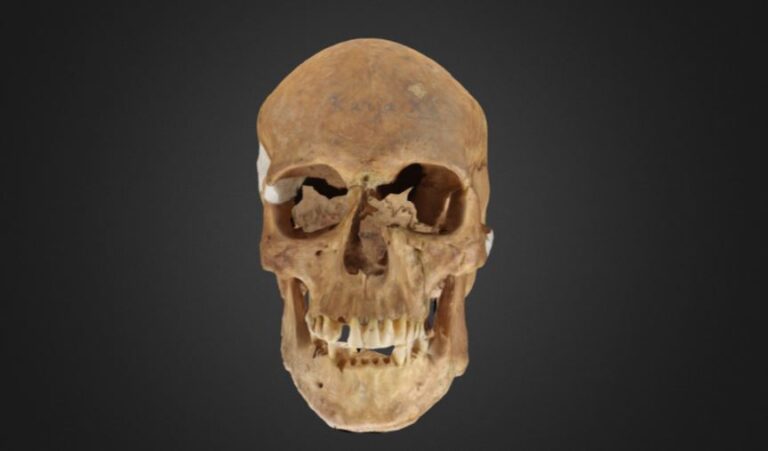
Karja burial no 4., 3D model by Ragnar Saage.
Saaremaa Museum has published videos of all the presentations from the international conference “Vikings before the Vikings”, which took place on 6-7 May 2022 and was supported by Osiliana. Marika Mägi gave a presentation about Saaremaa in the 7-9th century.
The presentations are in Estonian and English.
See the presentations: here.
On 20 August, we presented the ongoing archaeological excavations in the Valjala countryside, the findings and the first hypotheses.
Take a look at the news video about it (in Estonian): here.
19 August 2022
Tomorrow, Saturday 12-14, there will be an open day at the Valjala hillfort. You are welcome to come and see and hear what we have found!
We can say right away, the excavations have led to exciting discoveries as well as new questions. Just outside the great rampart, the foundations of another wall, 2 m in diameter, lie underground. Just inland from this is an area filled with large boulders, which formed a rather steep slope and was supported by a wall of clay soil. On top of the clay-soil rampart there was probably a wooden shelter, as suggested by a posthole excavated in one of the trenches. Outside the clay-soil rampart, between it and the second (earlier?) circular wall, there was a paving of flagstones.
It turns out, however, that inside the clay earth rampart there is another, stone-built wall, which can be seen from a trench made in the rampart roof. This was probably the original stone rampart, which has also been exposed inside the hillfort in earlier excavations. It has been reinforced at some time by an additional rampart of clay soil on the outside. It is highly probable that this construction work took place in the 13th century, when catapults were introduced and the castle needed to be protected from the large stones they threw.
However, when did the smaller wall at the foot of the fortress date from? Perhaps the excavations in the last few days will tell us. There is also currently an unfinished excavation on the outer rampart surrounding the whole of the above-mentioned complex, which, according to last year’s excavations, must have been built or at least reinforced in the 13th century and is 3 m wide.
The finds include a circa 13th-century arrowhead, an 11th-12th-century arrowhead and an 11th-century silver coin made into a pendant, as well as some pottery sherds.
15 August 2022
We started digging again in Valjala! In this heat, you have ice cream in one hand and a shovel in the other!

11 August 2022
A major international conference on the study of sagas opened this morning at Tallinn University.
The first half of the conference took place at the University of Helsinki. A true example of Balto-Finnic cooperation in the study of the Viking Age, which until now has not been very common.
Osiliana is involved in the organisation of the conference with advice and support, but even more so with the organisation of excursions in Saaremaa.
Saaremaa has a lot to show, even to visitors from other continents!
Moreover, it is another step on the way to presenting our Viking and prehistoric heritage to the rest of the world.
The logo of the conference is made after a pendant found in the harbour of Mullutu.
The picture shows the Norwegian Ambassador to Tallinn, Else Berit Eikeland, giving a welcoming speech at the opening ceremony at Tallinn University.

29 July 2022
Osiliana started this seasons’ archaeological excavations next to the Valjala hillfort, which will continue until 24 August, with some interruptions. An open day is scheduled for 20 August from 12:00-14:00, watch out for the advert!
The aim of the excavations is to clarify the hypothesis of the presence of a Middle Iron Age hillfort beneath the hillfort currently visible, which may have had as many as two concentric ramparts. Such fortifications were particularly widespread from the 5th to the 6th century BC on the island of Öland.
Whether the hypothesis is correct will hopefully become clear during the excavations, which are planned to take place in several places beyond the rampart currently visible.
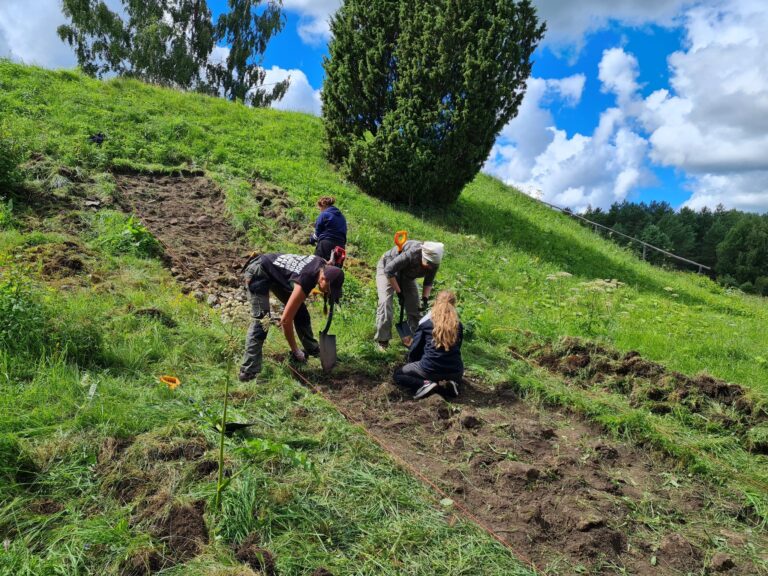
25 July 2022
The Valjala female burial no. IV, excavated in 2010 and where the remains of a possible shawl was found, is significant for several other reasons.
This burial belonged to a woman who had died between the ages of 40 and 50, and had been about 170 cm tall. Her left humerus had been broken at some time, but had fortunately healed. Her spine was slightly curved.
The woman had been buried with a very large number of objects, many of which had been placed under her back. She was wearing 12th century brooches, but the rest of the jewellery was exactly the same as that of the other burials, which date from the 13th century and rather mid-century. The manner of burial was also exactly the same as for 13th-14th century burials. In view of the woman’s age at the time of her death, it can therefore be said that she was probably buried with the headdresses fashionable at the time of her death, but also with the brooches worn in her youth.
As many as two 14C analyses of the grave showed that the woman had died either at the end of the 12th century or at the very beginning of the 13th century, and in any case before the official baptism of Saaremaa in 1227. Judging by the artefacts, then, quite soon after 1200. Judging by the location and the manner of burial, it is 99% probable that she was a Christian at the end of her life – people who converted to Christianity did not continue to bury in pagan cemeteries in the old way, but they did continue to bury in pre-existing Christian cemeteries. The possibility that the church of Valjala existed in some form as early as around 1200 can also be surmised from the archaeology carried out by the choir room of the church.
Next to the church in Valjala, household pits and other evidence of dwellings have also been discovered. Perhaps the first church in Valjala was a private church of a local noble, as they are known from the first centuries of Christianization all over Europe, and as can be assumed in Karja, Loona and Vira in Saaremaa. The woman was then probably one of the mistresses of the ancient manorhouse to which the private church belonged to.
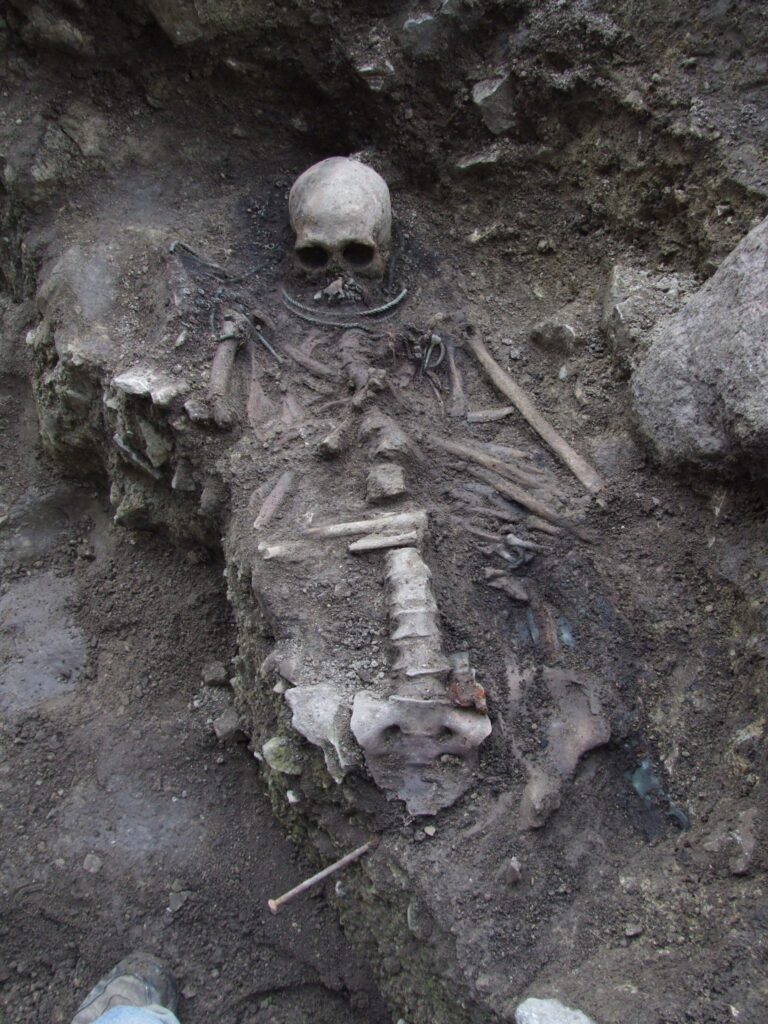
Although shawl was a widespread clothing item, no clear evidence of one has been found from the prehistoric or medieval sites of Saaremaa. Textiles simply do not preserve over hundreds of years as well as the items made of steel, iron, stone, etc.This spring Karin Rannaäär presented in her bachleros thesis that the remains of a shawl could be found from one of the burials by Valjala churchyard if one looks closely. In 2010 archaeologists excavated female burial no IV from the beginning of the 13-century and they found four looped square motifs. The location of the motifs in the grave indicate that these might have been the corners of a shawl!
Read more (available in ENG): here.

Four looped square motif found from the IV burial of Valjala churchyard. Photo: J. Ratas.
19 July 2022
In addition to the research on fortifications, Osiliana is currently also analysing the remains of already excavated inhumation burials in Saaremaa.
Recently, it was announced that the samples of 13th-century islanders’ bones sent to the laboratories of the Institute of Genomics at the University of Tartu are all suitable for ancient DNA analysis.
So far, 20 samples are being analyzed in the lab, most of them from the Karja cemetery, but also from 13th-century burials in the Valjala churchyard and the Loona cemetery. As well as information on origin, appearance and diseases, we hope to find out how people buried in the same cemetery were connected to or related to each other. Acording to current information, Karja and Loona in particulary seem to be burial sites of the same noble family.
Old DNA analyses are time-consuming, labour-intensive and expensive, and this is a relatively new analytical technique that has so far only been used to a limited extent for Saaremaa burials. However, it would be nice in the distant future to get to the point where, at least in the case of cemeteries with inhumation burials, we can say exactly who these people were. And hopefully in the distant future, we will also have more information about the people buried in prehistoric stone cairns.
The first results can perhaps be expected by the end of the year.
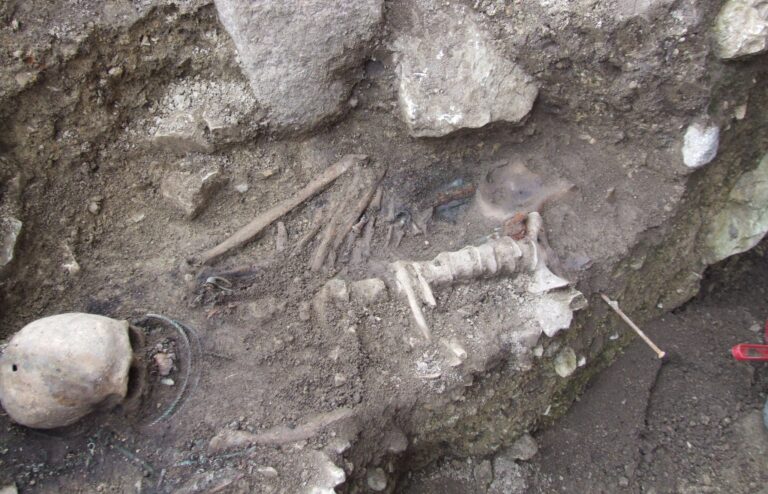
Osiliana had some research done with the ground-breaking radar on several hillforts of Saaremaa: Kaarma, Pöide and Valjala. It’s too early to talk about concrete results since the data is still in the process of analyzation. Nevertheless, we can say that it has already revealed two earlier walls inside of the outer wall of Valjala that we see today. This means that this wall was strengthened twice.
Photo: ERR.
18 May 2022
The excavations of the old hillfort of Valjala are now finished. A beautifully preserved rampart base has emerged from the excavation of about 4 m2. The original width of the rampart had been between 2.5 and 3 m, which represents a fairly substantial fortification. The foundation of the rampart, made of large limestone and ore stones, was covered by a layer of small limestone boulders, which had been preserved up to a height of 1,35 m in the higher part. The original rampart had therefore been considerably higher.
A remarkably large quantity of animal remains for such a small excavation, as well as more than a dozen clay potsherds and burnt clay fillings, were found in the fill. One of the pottery sherds was also located away from the rampart inside the fort.
Although the charcoal deposits are still awaited, it is by now quite clear that this is probably a small fortification dating from the first half of the Iron Age, or perhaps from the middle. Similar regular stone rings, about 35 m in diameter, are known elsewhere in Saaremaa and Läänemaa, and the excavation of the old forthill of Valjala may, apart from analysing the finds, also provide information on their probable period of use.
4 May 2022
Small Osiliana excavations were also carried out on the old hillfort of Valjala, 650 m north-east of the large fort. They were supervised by Ragi-Martin Moon, who is currently doing his master studies in Archaeology in Tartu University.
A trench was digged through the wall and the first finds were a pot sherd and animal bones. At the moment the site cannot be further dated, but the potsherd is more likely to be from the first half or from the middle of the Iron Age.
A more precise dating can hopefully be obtained from the 14C from animal bones. Nevertheless, it seems more than likely that it is a man-made and very ancient structure. The area of Valjala seems to have been a centre long before Henry of Livonia visited it…
30 March 2022
The first C14 results of Valjala hillfort are here! Though quite surprising, they are quite telling together with the rest of the found artifacts.
The area inside the hillfort and the area between the wall and outer area were in use in the 12th century. Some results pointed solely toward the 13th century, and most of the artifacts could also be considered to be from the middle of the 13th century or from the later decades. By the C14 results and artifacts, the middle hillfort of Valjala and the surrounding wall existed and were in use during the 13th century. According to the local folklore, the outer wall was carried away for road construction.
The analysis of the results of the 1960s excavations led by Aita Kustin illustrated firmly that the 12th-century buildings inside the hillfort are older than the proximate wall surrounding these. Therefore, this wall must have been raised around 1200 AD or most likely in the later years of the 13th century. Nevertheless, there must have been some sort of less capital wall earlier as well. The same could be said for the outer wall, which was excavated in the summer of 2021. This 3-meter wide wall was most probably built during the first half of the 13th century.
Hopefully, the excavations ahead in the summer of 2022 can give us some clarity on whether the Valjala hillfort with its two high circling walls existed in 1227 when it was described by the Livonian chronicler Henry, or these massive stone walls were built after 1227. The latter option would have been seen as unrealistic beforehand, but new research has illustrated that several other hillforts of Estonians were also expanded and fortified after the infamous Crusades. As is seen from the documents and parchments, the crusaders and missionaries had very loose power over the local elite of Saaremaa and it seems even more likely that they might have had the interest to expand their hillforts as well.
Another surprising C14 result came from the piece of coal that was discovered under the outer wall and was dated to the 7th century. Additionally, the excavations at the building which is located a few meters away from the hillfort revealed abundant amounts of ceramic pieces from different periods. The building was in use from the 5th to 6th century, but also in the 12th to 13th century. It is uncertain whether it was also in use between these two periods.
The research on Valjala hillfort will continue this summer with the ground-penetrating radar and new archaeological excavations.
15 September 2021
Today we finished the excavations in Valjala for the year. When we excavated the wall, we were in for a surprise: a beautiful pendant came out of an earlier layer of culture directly from under the wall. The pendant is most likely from the end of the prehistoric period. The massive clay and stone masonry wall, 4 m wide, was thus built on a cultural layer dating from the end of the prehistoric period. So when?
There was also a thin bronze pile near the rampart and a knife fragment in the lower cultural layer between the two walls.
In this excavation, an earlier enclosure or wall could be assumed from the southern part of the transect, where there was no clear cultural layer under the masonry. However, the history of the construction of the rampart is still unclear at the moment, whether there was an earlier narrower stone fence that was extended or whether the entire 4 m wide rampart was constructed at one time.
At the moment there are more questions than answers. It is hoped that C14 analyses and research in the coming years will provide some clarity. The only indication that is certain at the moment is that a strong rampart, at least in the lower part of the stone wall, surrounded the currently visible Valjala fortress in the late prehistoric period or in the 13th century.
The archaeology consists, alas, of both fieldwork and subsequent (as well as previous) work. We’ll keep you posted!
14 September 2021
Excavations around the Valjala fortress are now continuing, and new discoveries are being made by exploring the rampart surrounding the current fortress to the south.
Here, too, there has been a massive rampart, 3-4 m wide, with what appears to be an earlier and more modest rampart underneath, and in any case a clear cultural layer. So far, no pottery has been found here on the southern border, but we did find a sickle and a silver spike sewn on cloth or leather in the lower cultural layer.
We can now say with some certainty that the earlier fortress of Valjala was larger than Varbola. Judging by the pottery and finds, it was active sometime in the late Iron Age, the Viking Age or the 11th-12th centuries, but more precise dating is still awaiting laboratory samples. In any case, a massive stone and clay wall was built over this earlier part at some time.
Excavations will continue for a few more days this year.
18 August 2021
We have rain holidays in Valjala! Our tranche is drowning in mud and rainwater.
Now all hope is on the weather – maybe the rain will stop for a bit so that we could finish this tranche before the autumn season.
14 August 2021
Valjala’s second circular wall offers even more surprises. At the moment, there seems to be a remnant of another possible rampart beneath the 3 m wide rampart, in any case a decent cultural layer with charcoal, burnt stones and pottery. An Iron Age circular rampart fortress?
Excavations will continue from tomorrow, when we will start to remove this cultural layer.

